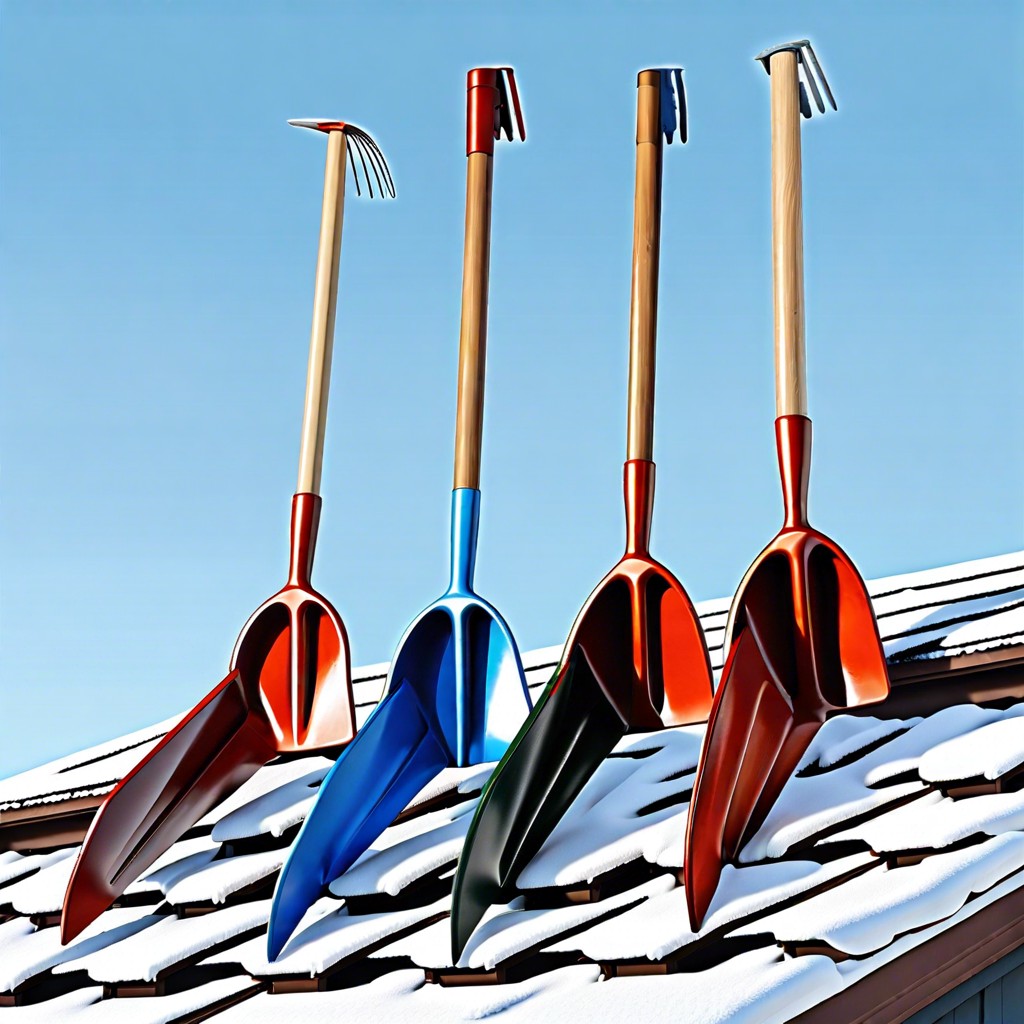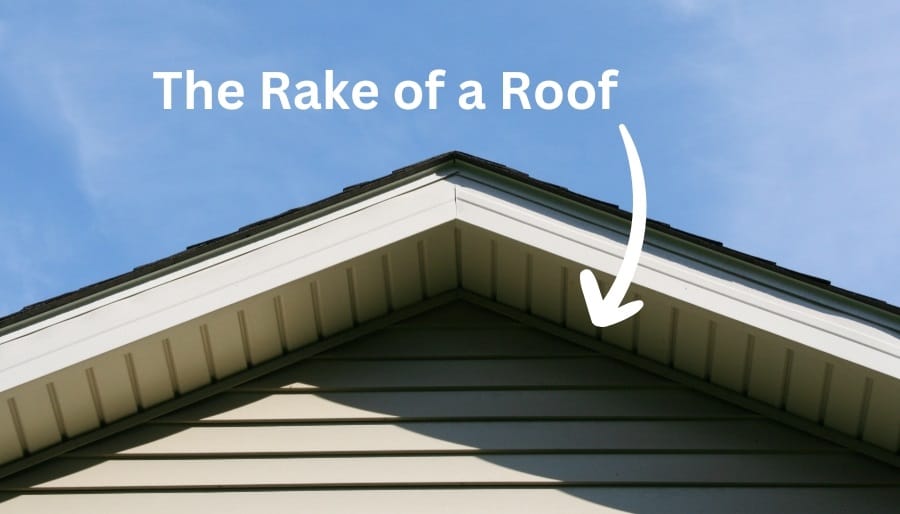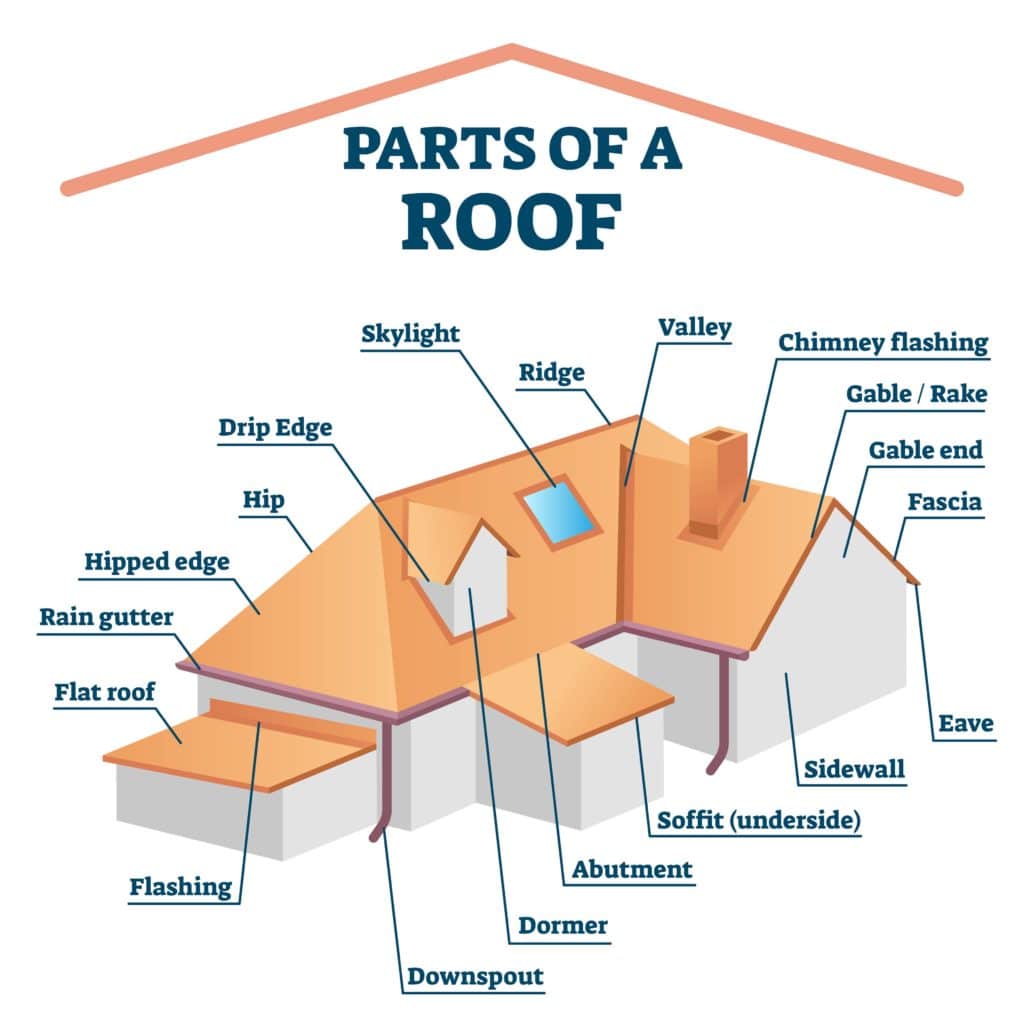Roof Rakes: The Ultimate Guide To Types, Maintenance & More!
Ever looked at a roof and wondered about those angled edges, the ones that aren't quite the eaves but still seem important? Understanding the nuanced role of the roof rake is absolutely critical to safeguarding your home's structural integrity and aesthetic appeal.
The 'rake' of a roof, a term often used interchangeably with 'verge,' isn't just a design element; it's a functional component that significantly impacts your home's resilience against the elements. It's the sloping edge of a gable roof, stretching from the eave to the ridge. But what exactly does it do, and why should you care? This architectural feature plays a pivotal role in protecting your home from water damage, wind uplift, and even pest infestations, while simultaneously contributing to its overall curb appeal. Neglecting the rake can lead to costly repairs down the line, making proactive maintenance and a solid understanding of its function paramount for any homeowner. Whether you're dealing with a traditional closed rake system or an exposed, open rake design, knowing the ins and outs can save you a significant amount of time, money, and stress.
| Attribute | Details |
|---|---|
| Name | Roof Rake (Architectural Feature) |
| Function | Protects gable roof edges from weather damage; enhances aesthetics. |
| Types | Open Rake, Closed Rake, Overhanging/Extended Rake |
| Materials | Wood (e.g., pine, cedar), Aluminum, Vinyl, Composite Materials |
| Maintenance | Regular inspection for damage, cleaning, prompt repairs. |
| Related Terms | Verge, Barge Board, Gable, Eave, Drip Edge |
| Considerations | Climate, roof style, material durability, cost. |
| Further Information | Comprehensive Guide to Roof Rakes (Example Website - Replace with authentic source) |
One of the primary functions of the roof rake is diverting water away from the walls and foundation of your home. This is especially critical in regions prone to heavy rainfall or snowfall. By effectively channeling water, the rake prevents moisture buildup, which can lead to rot, mold growth, and structural damage. A well-maintained rake ensures that your home remains dry and protected, preserving its value and integrity.
- Seal Bio Hits Shocking Controversy The Untold Story
- Vince Gills Health Updates Challenges Amy Grant News
Beyond water diversion, the roof rake also plays a crucial role in preventing wind uplift. During high winds, the edges of the roof are particularly vulnerable. A properly installed and maintained rake provides additional reinforcement, helping to secure the roofing materials and prevent them from being torn off. This is especially important in areas prone to hurricanes, tornadoes, or strong gusts of wind.
The aesthetic contribution of the roof rake should not be overlooked. It provides a clean, finished look to the gable end of the roof, enhancing the overall curb appeal of your home. The rake can be customized with different materials, colors, and styles to complement the architectural design of your house. A well-designed and maintained rake adds a touch of elegance and sophistication to your home's exterior.
There are several types of roof rakes, each with its own unique characteristics and applications. The most common types include:
- Ice Spices Real Name The Untold Story Rise To Fame Facts
- Emily Compagno Love Divorce New Beginnings Her Journey
- Closed Rake: This is the most traditional type, where the roof sheathing extends to the edge and is covered with rake boards. It provides a clean, finished look and offers excellent protection against the elements.
- Open Rake: In this design, the edge is left exposed, showcasing the roofing materials. It is often used in modern or contemporary homes and can provide a more minimalist aesthetic.
- Overhanging/Extended Rake: This type extends beyond the wall, providing additional protection from the elements. It is often used in areas with heavy rainfall or snowfall.
The design of the roof rake depends significantly on the overall roof style of your home. Traditional homes with asphalt shingles often utilize a closed rake system, while modern homes may opt for an open rake design. The choice of material also plays a crucial role, with options ranging from wood and aluminum to vinyl and composite materials.
When it comes to materials, several options are available, each with its own advantages and disadvantages:
- Wood: Wood is a classic choice that offers a natural, warm look. However, it requires regular maintenance to prevent rot and insect infestation.
- Aluminum: Aluminum is a lightweight, durable option that is resistant to rust and corrosion. It is also relatively low-maintenance.
- Vinyl: Vinyl is a cost-effective option that is easy to install and maintain. However, it may not be as durable as other materials.
- Composite Materials: Composite materials are a blend of wood and plastic, offering the benefits of both. They are durable, low-maintenance, and resistant to rot and insect infestation.
Proper installation is crucial for ensuring the long-term performance of your roof rake. The rake boards should be securely fastened to the roof sheathing and aligned properly to prevent water from seeping behind them. It's essential to measure each rake edge twice to avoid costly mistakes and ensure a precise fit. Use safety glasses, gloves, a saw appropriate for your material, drill, sealant, fasteners, and a ladder for the installation. Carefully cut your rake trim material to the measured lengths, ensuring clean, precise cuts. Consider using a drip edge to further protect the underlayment and fascia.
Maintaining your roof rake is essential for extending its lifespan and ensuring it continues to function effectively. Regular inspections should be conducted to identify any signs of damage, such as cracks, rot, or loose fasteners. Prompt repairs should be made to prevent minor issues from escalating into more significant problems.
Here are some essential maintenance tips for your roof rake:
- Clean the rake regularly: Remove any debris, such as leaves, twigs, and dirt, that may accumulate on the rake.
- Inspect for damage: Check for cracks, rot, loose fasteners, and other signs of damage.
- Repair any damage promptly: Address any issues as soon as they are identified to prevent them from worsening.
- Seal any gaps or cracks: Use caulk or sealant to fill any gaps or cracks that may allow water to penetrate.
- Apply a protective coating: Consider applying a protective coating, such as paint or stain, to protect the rake from the elements.
In regions with heavy snow or high winds, understanding and maintaining your roof rake is even more important. Snow accumulation on the roof can put significant stress on the rake, potentially leading to damage or collapse. High winds can also exert considerable force on the rake, increasing the risk of uplift or detachment.
To mitigate these risks, consider the following:
- Snow Removal: Use a roof rake tool to remove snow from your roof while standing safely on the ground, minimizing the risk of falls and injuries.
- Reinforcement: Consider reinforcing the rake with additional fasteners or supports to withstand high winds.
- Regular Inspections: Conduct more frequent inspections during the winter months to identify any signs of snow or wind damage.
The design of the roof rake is also influenced by the roof's slope and material. A steeper slope will require a different rake design than a shallower slope. Similarly, different roofing materials, such as asphalt shingles, tile, or metal, will require different rake materials and installation techniques.
When selecting a roof rake, several factors should be considered:
- Material: Choose a material that is durable, weather-resistant, and compatible with your roofing materials.
- Style: Select a style that complements the architectural design of your home.
- Size: Ensure that the rake is appropriately sized for your roof.
- Cost: Consider your budget and choose a rake that offers the best value for your money.
In addition to the roof rake, other roofing components play a crucial role in protecting your home from the elements. These include:
- Drip Edge: A drip edge is a metal flashing that is installed along the edges of the roof to prevent water from running down the fascia and causing damage. The critical role of drip edges in roof protection can't be overstated.
- Underlayment: Underlayment is a waterproof barrier that is installed beneath the roofing materials to provide an additional layer of protection.
- Flashing: Flashing is a metal material that is used to seal around chimneys, vents, and other roof penetrations to prevent water leaks.
- Ventilation: Proper roof ventilation is essential for preventing moisture buildup and maintaining a comfortable indoor climate. By preventing extreme temperature and moisture fluctuations, ventilation protects roofing materials from damage and premature aging.
Choosing the right roofing nails is crucial for ensuring the long-term performance of your roof. Mismatched nails can lead to premature roof failure. Several types of roofing nails exist, including stainless steel, galvanized steel, aluminum, and copper, each with specific benefits and applications. Insufficient penetration depth can lead to loose or falling shingles.
The right roof cement is essential for preventing premature cracking. Different roofing materials require specific cement types for optimal performance and longevity. Using a cement designed for these materials helps maximize their lifespan. Matching the product to your roof material prevents issues like poor adhesion or chemical reactions.
Understanding the functions of a roof rake and other roofing components is essential for making informed decisions about your roof's repairs, design, maintenance, and value. By taking proactive steps to protect your roof, you can extend its lifespan, enhance your home's safety, and preserve its value.
Climate change impacts your roof's vulnerability to extreme weather. It is important to learn proven strategies to protect against high winds and storms.
Ensure the skylight area is proportional to the daylit area for optimal natural light without oversizing. The roof's slope affects skylight drainage. Also, consideration of roof slope and material is necessary.
These homes typically suit traditional materials like asphalt shingles, the most common roofing material used in approximately 75% of roofing projects. (source: National Roofing Contractors Association).
Maintaining the rake area is crucial to prevent issues like ice dams and pest infestations. The rake of a roof serves as a protective barrier against the elements and contributes to the overall aesthetics of the home. We'll explore material options, installation best practices, and maintenance tips to help you make informed decisions about your roof's protection. Aluminum, galvanized steel, and copper are common material choices.
Finally, it's essential to remember that for approved aircraft maintenance programs (AMP), the review can be done either by the airworthiness review staff (ARS) during the airworthiness review or by the Continuing Airworthiness Management Organisation (CAMO) itself. If during the airworthiness review it is observed that there are discrepancies on the aircraft linked to deficiencies in the content of the aircraft maintenance programme, the AMP must be amended. This ensures the continued airworthiness of the aircraft and highlights the importance of regular inspections and maintenance.
- Cinemark West Plano Xd Screenx Finding Showtimes Amp Tickets Info
- Eric Roberts Runaway Train To Icon Then Now Journey

Roof Rake Buying Guide Choose the Best Model for Your Home

What Is The Rake of a Roof? Explained! Building Code Trainer

What Is The Rake Of a Roof? Boggs Inspection Services